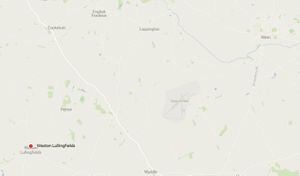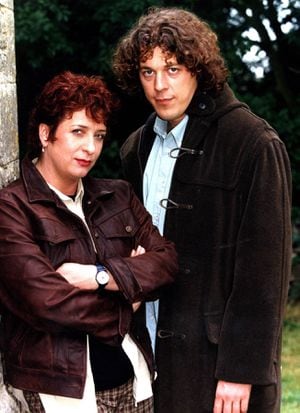How a young girl from Shropshire fooled Britain into thinking she had 'supernatural power'
She was said to be "possessed of some kind of supernatural power".

But as an unearthed newspaper article reveals, there's a much more down-to-earth explanation for one of the most infamous "Shropshire Mysteries" of the Victorian era.
This is the true story of Emma Davies, the servant "daughter of a labourer" who caused the whole Shropshire countryside "to gape open-mouthed" 140 years ago, when for two weeks she was thought to be the source of a series of supernatural occurrences.
The events made headlines beyond the borders of Shropshire.
An newly-unearthed Sheffield Daily Telegraph article dated Friday, November 16 1883 reports the solving of the "Shropshire Mystery" and the correspondent clearly went to some lengths to confirm the story. But not before giving a detailed account of what was alleged to have happened.
It all took place in Weston Lullingfields and Wem, and involved furniture moving by itself, knives flying about and even a real-life exorcism - subjects so intriguing that it's perhaps not surprising a newspaper in Yorkshire as well as others around the country were also interested in the tale.

The Sheffield Daily Telegraph article initially reads as if it were fiction, as it compellingly details events of the previous fortnight involving Emma Davies.
"It was alleged that the girl was possessed of some kind of supernatural power, and that when she was present coal leapt from the fire, articles of furniture moved about, clocks were thrown down and smashed, knives and brushes flew about, and that generally everything behaved in a most mysterious and unnatural manner."
According to the article, the "whole district" was left in a state of "wonder" and "astonishment" and it references reports that a clergyman visited Emma to exorcise her.
The article, uncovered in the British Newspaper Archive, reads: "It is even reported that a clergyman visited a house at which the girl was staying and went through some kind of religious exorcism, but without effect, the manifestations going on as vigorously as ever."
It's worth mentioning that this is a well-known story, and those of you who have heard it will know what really happened, but it's very well described and neatly wrapped up by this particular correspondent, so it's definitely worth telling again.
It turns out that far from possessing "supernatural powers," the cheeky child was in fact orchestrating something more akin to an episode of Jonathan Creek or Scooby-Doo.

The correspondent describes encountering Emma for the first time, after tracing her to a doctor, whose care she was in near Wem. It's here that she apparently confessed that the "supernatural" occurrences were simply the result of sleights of hand and other special tricks.
That's perhaps not surprising as she obviously wasn't a real witch, but the article gets more interesting as we slowly but surely find out more about Emma, from her appearance to her personality.
"We saw Emma Davies, a plain-looking girl, not 13 years of age, and very childish in appearance," the correspondent writes.
"She pretended for a while to cry when she was requested to go through some of her tricks for our benefit; but there were no tears."
The correspondent appears to have had very little time for the youngster's games, describing her as a "finished performer." Perhaps that's why she soon ceased the apparent faux tears and agreed to show the journalist some of her magic moves.
"The little girl was somewhat hysterical at first, but by-and-by she showed us how she made a bucket jump and a chair retreat at the double. It was all effected by a slight jerk of the hand."
Of course, all of this interesting information from the late 1800s neglects to answer three important questions: how did the not-yet-13-year-old daughter of a labourer become such an accomplished magician; why did she choose to deploy those skills in such a mischievous way; and why on earth did people believe that she had "supernatural" powers?
Well, to answer the 'how', the writer contacted the house that employed Ms Davies when the "supernatural events" first started. It was there that he had the good fortune to speak to a "waggoner" called Williams.
The waggoner reportedly confessed to learning some 'tricks at a harvest festival in a pub' and it was him that taught Emma "how to make furniture move of its own accord."
As to why she did it, I'm afraid it really was just a case of pure child's play: "Her statement is that she was put up to the game by fellow-servants," the article states.
And in terms of why people were so willing to believe her talents were out-of-this-world, the correspondent doesn't, I'm afraid, give a glowing review of the locals: "There can be no doubt that the credulity of the people hereabouts made them easy victims, if not assistants, of the delusion."
The "Shropshire Mystery" as it was known in the press is an incredibly interesting, and relatively amusing, snippet of history.
That it was covered so widely shows that the story had mass appeal.
And given that similar tales of "supernatural" powers being exposed as fake have been reproduced time-and-time again in modern media, it might not be too big a assumption to suggest it's an intriguing tale for a 21st century audience too.





